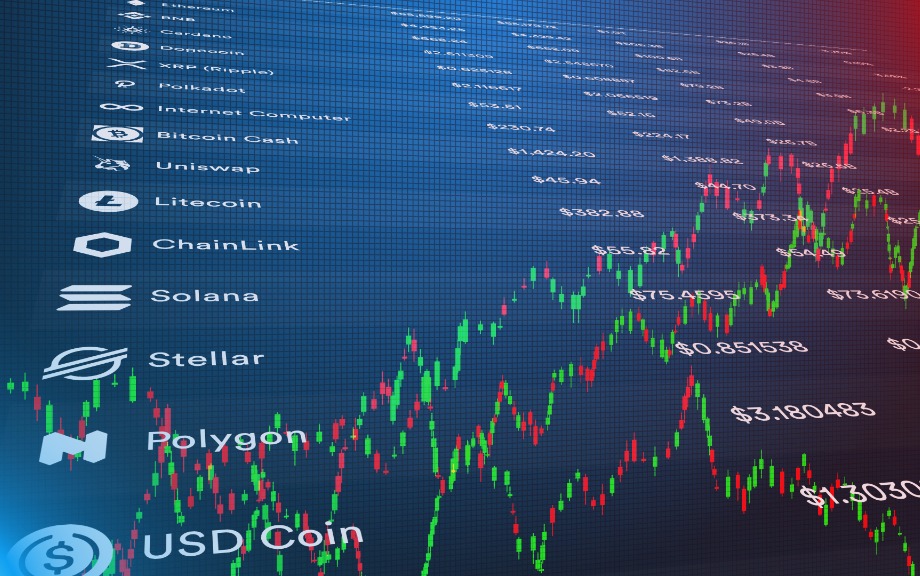Stablecoins and Crypto Shocks: An Update

Stablecoins are crypto assets whose value is pegged to that of a fiat currency, usually the U.S. dollar. In our first Liberty Street Economics post, we described the rapid growth of stablecoins, the different types of stablecoin arrangements, and the May 2022 run on TerraUSD, the fourth largest stablecoin at the time. In a subsequent post, we estimated the impact of large declines in the price of bitcoin on cumulative net flows into stablecoins and showed the existence of flight-to-safety dynamics similar to those observed in money market mutual funds during periods of stress. In this post, we document the growth of stablecoins since 2019, including the evolution of the reported collateral backing major stablecoins. Then, we estimate the impact on the stablecoin industry of large bitcoin price increases that occurred between 2021 and 2025.
The Origins of Market Power in DeFi

In our previous Liberty Street Economics post, we introduced the decentralized finance (DeFi) intermediation chain and explained how various players have emerged as key intermediaries in the Ethereum ecosystem. In this post, we summarize the empirical results in our new Staff Report that explains how the need for transaction privacy across the DeFi intermediation chain gives rise to intermediaries’ market power.
Interoperability of Blockchain Systems and the Future of Payments

In a previous post, we introduced a three-pillar framework for interoperability of payment systems and discussed how technological, legal, and economic factors contribute to achieve interoperability and aid in the “singleness of money”—that payments and exchange are not subject to volatility in the value of the money itself—in the context of legacy systems. In this post, we use the framework to characterize the interoperability of blockchain systems and propose a methodology for evaluating interoperability. We show evidence of limited interoperability and draw insights for the future of payment systems.
How Censorship Resistant Are Decentralized Systems?

Public permissionless blockchains are designed to be censorship resistant, meaning access to the blockchain is unhampered. In practice, different blockchain ecosystem actors (such as users, builders, or proposers) can influence the degree to which a blockchain is resistant to censorship. In a recent Staff Report, we examine how sanctions imposed by the Office of Foreign Assets Control (OFAC) on Tornado Cash, a set of noncustodial cryptocurrency smart contracts on Ethereum, affected Tornado Cash and the broader Ethereum network. In this post, we summarize findings regarding sanction cooperation at the settlement layer by “block proposers”—a set of settlement actors specifically responsible for selecting new blocks to add to the blockchain.
The DeFi Intermediation Chain

Decentralized Finance, or DeFi, is a rapidly growing ecosystem of financial applications built on blockchain technology, primarily on the Ethereum network. These applications aim to recreate traditional financial instruments and services, such as lending, borrowing, trading, and insurance. The DeFi intermediation chain connects a series of intermediaries who find arbitrage opportunities, aggregate transactions into blocks, validate these blocks, and ultimately append them to the blockchain. In this post, we summarize results from our staff report describing how arbitrage opportunities arise in the Ethereum blockchain, and how the need to keep these arbitrage opportunities private gives rise to the intermediation chain.
Do Exchange‑Traded Products Improve Bitcoin Trading?

Spot bitcoin exchange-traded products (ETPs) began trading in the U.S. on January 11, 2024. For investors, these ETPs purport improved liquidity and price efficiency, and more convenient access to bitcoin trading compared to other means of trading bitcoin in spot markets. Proponents also cite bitcoin holdings as a portfolio diversification opportunity due to historically low correlation with traditional financial securities. Others argue that bitcoin remains a speculative asset and that ETPs increase its interconnections with the traditional financial system. In this post, we examine the initial performance, trading costs, and price efficiency of spot bitcoin ETPs in the U.S.
Stablecoins and Crypto Shocks

In a previous post, we described the rapid growth of the stablecoin market over the past few years and then discussed the TerraUSD stablecoin run of May 2022. The TerraUSD run, however, is not the only episode of instability experienced by a stablecoin. Other noteworthy incidents include the June 2021 run on IRON and, more recently, the de-pegging of USD Coin’s secondary market price from $1.00 to $0.88 upon the failure of Silicon Valley Bank in March 2023. In this post, based on our recent staff report, we consider the following questions: Do stablecoin investors react to broad-based shocks in the crypto asset industry? Do the investors run from the entire stablecoin industry, or do they engage in a flight to safer stablecoins? We conclude with some high-level discussion points on potential regulations of stablecoins.
What Makes Cryptocurrencies Different?

Permissionless blockchains, which support the most popular cryptocurrency networks like Bitcoin and Ethereum, have shown that it is possible to transfer value without relying on centralized trusted third parties, something that is new and remarkable (although perhaps most clearly useful for less developed financial markets). What makes permissionless blockchains able to transfer value without relying on a small number of trusted third parties is the combination of several components that all need to work together. The components themselves are not particularly new, but the combination of these components is more than the sum of its parts. In this post, we provide a high-level overview of these components and how they interact, taking Bitcoin as an example.
Runs on Stablecoins

Stablecoins are digital assets whose value is pegged to that of fiat currencies, usually the U.S. dollar, with a typical exchange rate of one dollar per unit. Their market capitalization has grown exponentially over the last couple of years, from $5 billion in 2019 to around $180 billion in 2022. Notwithstanding their name, however, stablecoins can be very unstable: between May 1 and May 16, 2022, there was a run on stablecoins, with their circulation decreasing by 15.58 billion and their market capitalization dropping by $25.63 billion (see charts below.) In this post, we describe the different types of stablecoins and how they keep their peg, compare them with money market funds—a similar but much older and more regulated financial product, and discuss the stablecoin run of May 2022.
Is There a Bitcoin–Macro Disconnect?

Cryptocurrencies’ market capitalization has grown rapidly in recent years. This blog post analyzes the role of macro factors as possible drivers of cryptocurrency prices. We take a high-frequency perspective, and we focus on Bitcoin since its market capitalization dwarfs that of all other cryptocurrencies combined. The key finding is that, unlike other asset classes, Bitcoin has not responded significantly to U.S. macro and monetary policy news. This disconnect is puzzling, as unexpected changes in discount rates should, in principle, affect the price of Bitcoin.










 RSS Feed
RSS Feed Follow Liberty Street Economics
Follow Liberty Street Economics